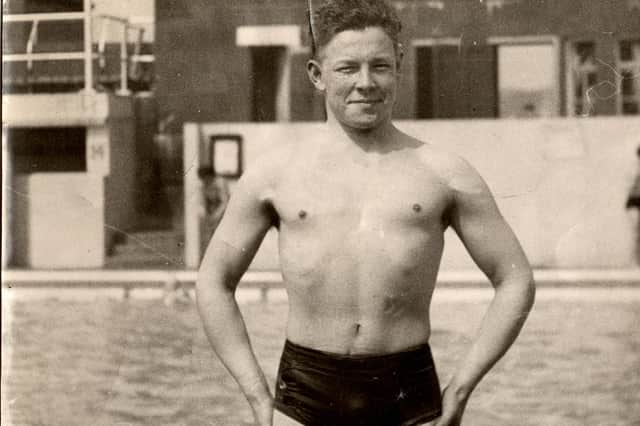Obituary: Bill Black, internationally respected Scottish swimming official


Bill Black made a massive contribution to Scottish swimming, neatly summarised in an online tribute by the sport’s governing body: “It is no understatement to suggest Bill Black was Scottish swimming and Scottish swimming owes a great deal to Bill Black.”
Lifelong involvement began early with his local Clydebank Amateur Swimming Club at their then Bruce Street Baths, whom he represented competitively and at water polo, continuing well into his thirties. Subsequently he enjoyed a distinguished career as an administrator in various positions, including Scotland’s swimming team manager at the 1974 Commonwealth Games in New Zealand, Director of Aquatics [swimming and diving] at the 1986 Commonwealth Games in Edinburgh, Secretary and President of SASA, [the Scottish Amateur Swimming Association, forerunner of today’s Swimming Scotland] and delegate to LEN and FINA conferences [respectively, the sport’s European and World governing bodies]. His longterm commitment, which required extensive travel, was carried out completely voluntarily, underpinned by his love of the sport.
Advertisement
Hide AdAdvertisement
Hide AdAlthough the holder of high-profile positions, Bill was no glory seeker or self-promotional networker, but preferred to work quietly and effectively in the background. He liked doing things properly, was very methodical, reliable and dedicated, leading to recognition of his selfless work by the award of FINA’s silver medal and Life Membership of Scottish Swimming.
William Black was born in Clydebank to parents William and Mary, older brother to Sam. His father was an angle ironsmith at the local John Brown’s shipyard and the family lived in Duntocher. Bill attended the local primary school, after which he went to Clydebank High School where he was Head Boy.
He began representing his club in indoor meetings and galas in outdoor pools throughout Scotland, his favourite discipline being breast stroke. He also enjoyed what is now known as open water swimming, including from Helensburgh in the Firth of Clyde and later at Broughty Ferry, doing return crossings of the Tay. While he was an enthusiastic and good standard club swimmer, he did not aspire to championship honours. Bill also became involved in teaching, swimming and coaching, but it would be in the realm of administration that he would make his biggest mark.
Initially a club delegate to Western District, he soon became District Secretary before numerous prestigious appointments followed. These included his 1974 Commonwealth Games role, while in 1977 he was made Secretary of SASA, a position he held with distinction for almost 20 years. A member of Great Britain’s swimming committee, he also attended FINA’s Congress prior to the 1984 Olympics in Los Angeles and was responsible for compiling FINA’s Operating Manual for Synchronised Swimming which, with updates, regulated that discipline until 1996. Bill’s wife Mary, also very involved in the sport, was primarily responsible for the Technical Committee input to the Manual. In 1986, in addition to that year’s Commonwealth Games appointment, he was awarded the JY Coutts Memorial Award for “outstanding services to SASA”.
In 1996 Bill took over Presidency of SASA, during which time he launched Splash News, a quarterly magazine containing features on the sport here. This successful initiative, which continues today, combined his interest in computers and photography in its production and content. Bill’s enthusiasm for photography saw him poolside with his camera at many meetings, including the 2006 Melbourne Commonwealth Games as official photographer for Splash News. Once retired from officialdom he maintained his interest in the sport, attending events regularly and assisting Mary with Synchronised Swimming administration.
Swimming was very much a family activity as it was through Clydebank Swimming Club that he met future wife Mary Murray, who was a member of the Ladies’ Section. The couple went on to enjoy 66 years of happy marriage during which they had son Kenneth, who also became involved in swimming. At first they lived in their native Clydebank before moving, in the mid-1980s, to Balfron, where they remained.
After leaving school Bill attended Glasgow School of Art before being called up for National Service with the RAF in West Germany. Through his photography interest, he was assigned to that section at his base where duties included loading the film on to spy plane cameras for their expeditions behind the Iron Curtain and the subsequent processing of material. On his return to the art school he secured his Diploma and began working as a commercial artist for DC Thomson in Dundee, when he swam the Tay with the quaintly named Ye Olde Aquibians. He then attended Jordanhill College for teacher training, after which he taught in schools in Clydebank, Glasgow and Paisley before becoming Head of Art and Design at Clydebank Technical College, a post he held for 20 years. Mary also taught there, with PE her subject. During this time both undertook voluntary youth work at the Hub centre in the town.
In retirement Bill pursued various interests alongside his ongoing photography and computer pursuits. These included voluntary work in several roles with Scottish Badminton over 20 years and as a member of Friends of the Glenlee, the famous Clyde-built tall ship, a maritime heritage group. He was instrumental in the production of their quarterly Journal and continued doing so until recently. He was a committee member of Drymen Art Club, whose annual exhibition regularly featured his work.
Advertisement
Hide AdAdvertisement
Hide AdBill lived a full life and was held in much affection by all with whom he came into contact. Many tributes appeared on social media, describing him as a “Diamond of a man”, “An extra special individual”, and “Such a lovely man”.
He is survived by Mary and Kenneth.